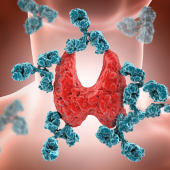Our lifestyle, diet and genetics all play a role in how our eyes function as we age. While there are many factors at play, specific nutrients seem to play a crucial role. Nutrigenetics can help us understand who is at increased risk of developing issues with their eyesight. Dr Charles Desmarchelier takes us on a deep dive into the Nutrigenetics of Eye Health.
Carotenoids are natural pigments produced in many fruits and vegetables, mushrooms, and algae and are responsible for colours ranging from red to yellow. The most abundant ones found in the human diet and in human tissues, are β-carotene, lycopene, lutein, β-cryptoxanthin, α-carotene, and zeaxanthin. Lutein and zeaxanthin are of particular interest because they are found at high concentration in the macula of the eye, estimated by measuring macular pigment optical density (MPOD), where they can absorb incident blue light and hence protect the retina from light-induced damages.1
Their consumption has been associated with protection from age-related macular degeneration (ARMD)2 and improved cognitive function.3 There is a relatively large interindividual variability in MPOD, which is partly due to the large interindividual variability in the bioavailability of lutein and zeaxanthin.4 Several single nucleotide polymorphisms (SNPs) in a dozen of genes involved in the metabolism and transport of these molecules have also been associated with this variability.5, 6
The goal of the study by Liu et al. 2021 was to investigate the involvement of genetic variations in MPOD variability in 134 children aged 7-9 years (comprising both males and females).7 Twenty-six candidate SNPs were selected and their association with MPOD was measured, controlling for ancestry, age, sex, visceral fat mass, and dietary lutein and zeaxanthin intake. Three SNPs were significantly associated with MPOD (BCO1-rs7501331, CD36-rs1527483, and CD36-rs3173798) but only the association with CD36-rs3173798 remained significant after adjusting for dietary lutein and zeaxanthin intake, with an adjusted R² of 0.159. CD36 is a protein involved in the transport and metabolism of lipids, including carotenoids, which is found in both the intestine and retina. CD36-rs3173798 is an expression quantitative trait locus (eQTL), i.e. it is associated with variation in CD36 mRNA levels.
The difference in MPOD reported by the present study between carriers of the C allele at CD36-rs3173798 versus T allele homozygote (the former group exhibiting a 30% lower MPOD value) could be clinically relevant in the context of ARMD prevention. Of note, the present SNP is found at a higher prevalence in non-European populations.8 The SNP reported in BCO1 is a well-known SNP in carotenoid metabolism since carriers of the T allele exhibit a reduced conversion of β-carotene to retinol.
This study is important because it is the first to investigate the association of SNPs with MPOD in children. Since higher MPOD is associated with improved cognitive functions and since lower MPOD is a risk factor for ARMD,9 it seems relevant to identify early-in-life individuals at risk of cognitive decline or eye pathologies. Whether individuals carrying the C allele at this SNP would benefit from dietary recommendations aiming at improving their lutein and zeaxanthin intake and bioavailability and whether these results apply to adolescents or adults remains to be investigated.
Nonetheless, this study adds to the growing body of evidence linking genetic characteristics with MPOD, and by extension with ARMD risk and cognitive function. The findings suggest that some easily accessible SNP data might be informative in proposing personalized dietary recommendations aimed at increasing MPOD with carotenoids.
References:
- Mares, J. (2016). Lutein and Zeaxanthin Isomers in Eye Health and Disease. Annu Rev Nutr, 36, 571-602.
- Aronow, M. E., & Chew, E. Y. (2014). Age-related Eye Disease Study 2: perspectives, recommendations, and unanswered questions. Curr Opin Ophthalmol, 25(3), 186-190.
- Johnson, E. J. (2014). Role of lutein and zeaxanthin in visual and cognitive function throughout the lifespan. Nutr Rev, 72(9), 605-612.
- Desmarchelier, C., & Borel, P. (2017). Overview of carotenoid bioavailability determinants: From dietary factors to host genetic variations. Trends in Food Science & Technology, 69, 270-280.
- Meyers, K. J., Johnson, E. J., Bernstein, P. S., Iyengar, S. K., Engelman, C. D., Karki, C. K., Liu, Z., Igo, R. P., Jr., Truitt, B., Klein, M. L., Snodderly, D. M., Blodi, B. A., Gehrs, K. M., Sarto, G. E., Wallace, R. B., Robinson, J., LeBlanc, E. S., Hageman, G., Tinker, L., & Mares, J. A. (2013). Genetic determinants of macular pigments in women of the Carotenoids in Age-Related Eye Disease Study. Invest Ophthalmol Vis Sci, 54(3), 2333-2345.
- Yonova-Doing, E., Hysi, P. G., Venturini, C., Williams, K. M., Nag, A., Beatty, S., Liew, S. H., Gilbert, C. E., & Hammond, C. J. (2013). Candidate gene study of macular response to supplemental lutein and zeaxanthin. Exp Eye Res, 115, 172-177.
- Liu, R., Hannon, B. A., Robinson, K. N., Raine, L. B., Hammond, B. R., Renzi-Hammond, L. M., Cohen, N. J., Kramer, A. F., Hillman, C. H., Teran-Garcia, M., & Khan, N. A. (2021). Single Nucleotide Polymorphisms in CD36 Are Associated with Macular Pigment among Children. J Nutr, 151(9), 2533-2540.
- Handelman, G. J., & Handelman, S. K. (2021). Single-Nucleotide Polymorphisms in CD36 are Associated With Macular Pigment Among Children. J Nutr, 151(9), 2507-2508.
- Bernstein, P. S., Delori, F. C., Richer, S., van Kuijk, F. J. M., & Wenzel, A. J. (2010). The value of measurement of macular carotenoid pigment optical densities and distributions in age-related macular degeneration and other retinal disorders. Vision research, 50(7), 716-728.


